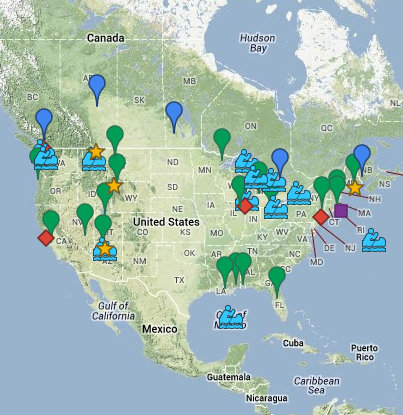One of the themes I've come back to in talks the last few years is the that beaches are pretty easy to create. It doesn't take unusual circumstances and it doesn't require much time. It just takes some loose sand or gravel-size sediment and enough wave action to keep it moving around. They show up in a lot of places. But they don't all look like the ones in the Corona ads, which is what makes them so interesting.
Beaches are relatively common on larger lakes where there is sufficient fetch to generate reasonable waves, at least if there is the right size of sediment to build from. But lakes don't make beaches easy. Freshwater doesn't pose the same impediments to shoreline vegetation as does saltwater, so plants thrive at the water's edge, sheltering and stabilizing sediment. And in the Northwest, I suspect most lakes, at least prior to significant development, were fringed with fallen trees and big wood, which would discourage beaches.
AERIAL VIEW
This beach is at the bottom of the slope below the Lake Quinault Lodge on the south shore of the lake. A small point creates a favorable orientation for a small swash-aligned beach. Of course, on lakes like this, the beach may well have been created intentionally with the clearing of vegetation and maybe even the addition of some gravel, but I'm not sure.
 As far as I know, the level of Lake Quinault is not managed and simply reflects the natural ability of the outlet (the Quinault River) to pass the water that flows in from the upper watershed. The lake can fluctuate significantly -- you can see a wrack line behind the beach where the water reached about a week earlier. I walked a section of the lakeside trail and was impressed by the amount of big drift wood rafted into the low areas surrounding the lake.
As far as I know, the level of Lake Quinault is not managed and simply reflects the natural ability of the outlet (the Quinault River) to pass the water that flows in from the upper watershed. The lake can fluctuate significantly -- you can see a wrack line behind the beach where the water reached about a week earlier. I walked a section of the lakeside trail and was impressed by the amount of big drift wood rafted into the low areas surrounding the lake.


No comments:
Post a Comment